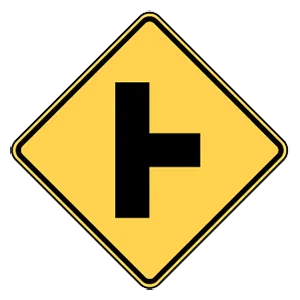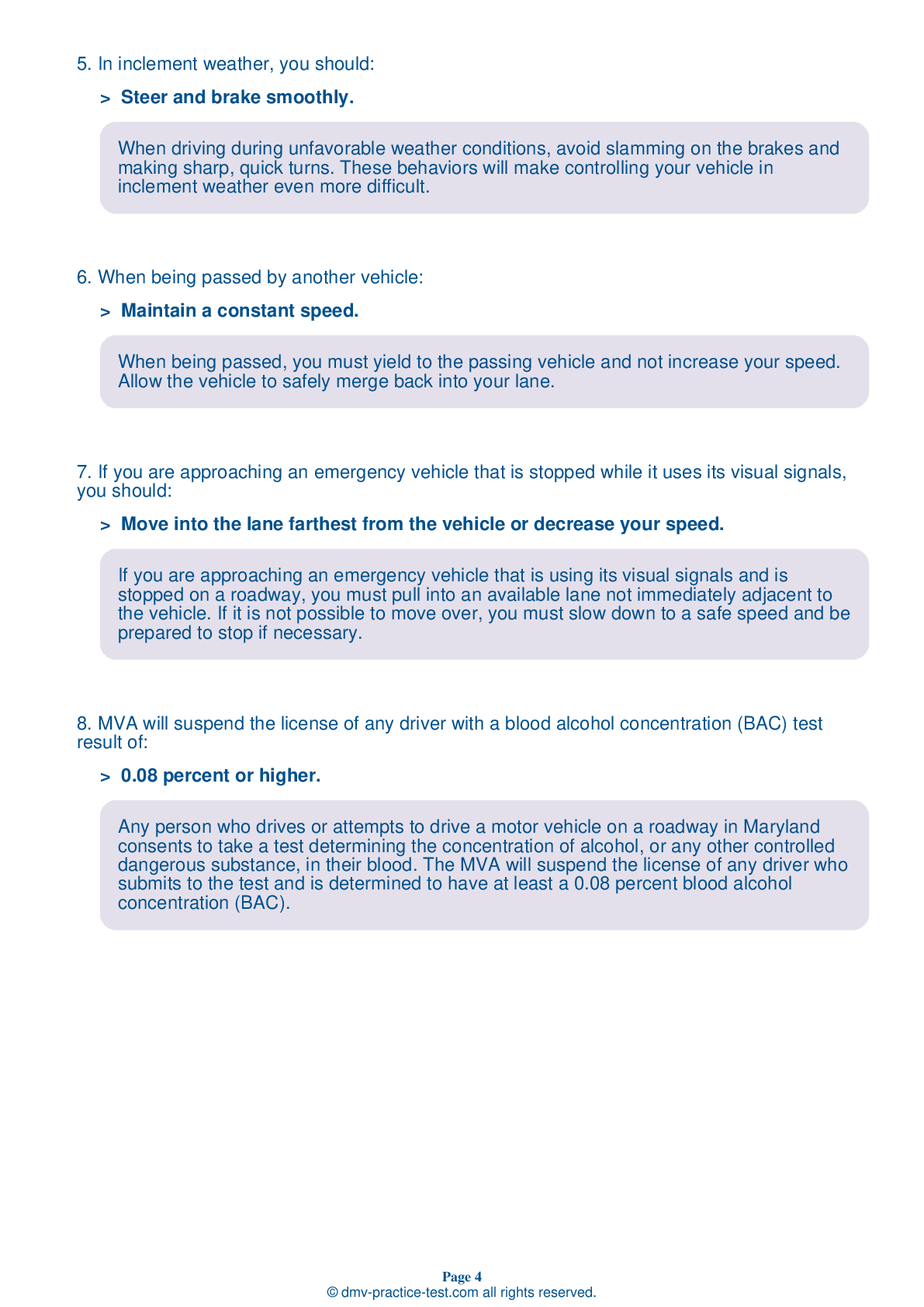FREE Maryland DMV Practice Test #19 Page 3 of 3
Maryland DMV practise examinations have been updated for January 2025. It includes questions based on the Maryland Driver Handbook's most essential traffic signals and regulations for 2025. Use actual questions that are very similar (often identical!) to the DMV driving permit test and driver's licence exam to study for the DMV driving permit test and driver's licence exam.
On the practise exam, each question gets a tip and explanation to help you remember the concepts. The written component of the official Maryland DMV test will include questions about traffic rules, traffic signs, and driving statutes, as well as knowledge from the Driver Handbook.
To obtain a passing grade, you must correctly answer 22 of the 25 questions. Take our DMV practise exam to help you prepare for your Maryland instruction permit or driver's licence.
The DMV exam is available in several languages.
Using any kind of testing assistance will result in an automatic fail, and the DMV may take additional action against your driver's licence, so stay away from it.
17 . When driving in snowy or icy conditions, you should:
Reduce your speed when roads are snow-covered or icy. Doing this and increasing your following distance when traveling on slippery roads are the best things a driver can do to avoid crashes and collisions.
18 . This road sign means:

Warning signs provide notice to road users of a situation that might not be readily apparent and are usually yellow with black markings. This warning sign tells drivers to be alert to an intersecting side road ahead.
19 . It is dangerous to follow a motorcycle too closely because:
Motorcycles can stop quickly and following them too closely endangers your life and that of the motorcyclist. If the motorcyclist makes a mistake, you need to have enough time and space to avoid a crash.
20 . When displayed on the rear of a vehicle, the sign shown indicates:

You may encounter slow-moving vehicles on the roadways, such as bicycles, horse-drawn vehicles, or farm vehicles. Some of these vehicles may display this emblem to warn other drivers that they will only be traveling at speeds of 25 mph or slower.
21 . This bicyclist is signaling:

Bicycles do not have turn signals so bicyclists use hand and arm signals to alert other drivers to their intentions. If a bicyclist puts their left arm straight out, they are signaling that they intend to turn left.
22 . This sign means:

This sign marks the presence of a crosswalk. Be alert to any pedestrians that may be crossing the roadway.
23 . Which of the following blocks the smooth flow of traffic?
Rubbernecking (the practice of slowing down to look at collisions or other out-of-the-ordinary things) contributes to traffic congestion and should be avoided.
24 . This sign means:

A triangular yellow sign with black lettering indicates a no passing zone. It will appear on the left side of a two-way, two-lane roadway at the beginning of an area where prohibitive pavement markings are also used.
25 . What can you do to reduce road rage?
To do your part to prevent road rage, you should follow laws, signs, signals, and pavement markings. Always signal your intention when changing lanes.
2025 Maryland | Frequently Asked Questions
1. Be at least 15 years and 9 months old.
2. Pass the vision exam.
3. Complete the Maryland MVA Online Driver Test Tutorial.
4. Pass the knowledge test.
5. Provide proof of identity, age, and Maryland residency.
6. Have a parent or guardian co-sign your application.
7. Pay the required fee.
Remember, you must hold your learner's permit for nine months before you can take the driving test.



